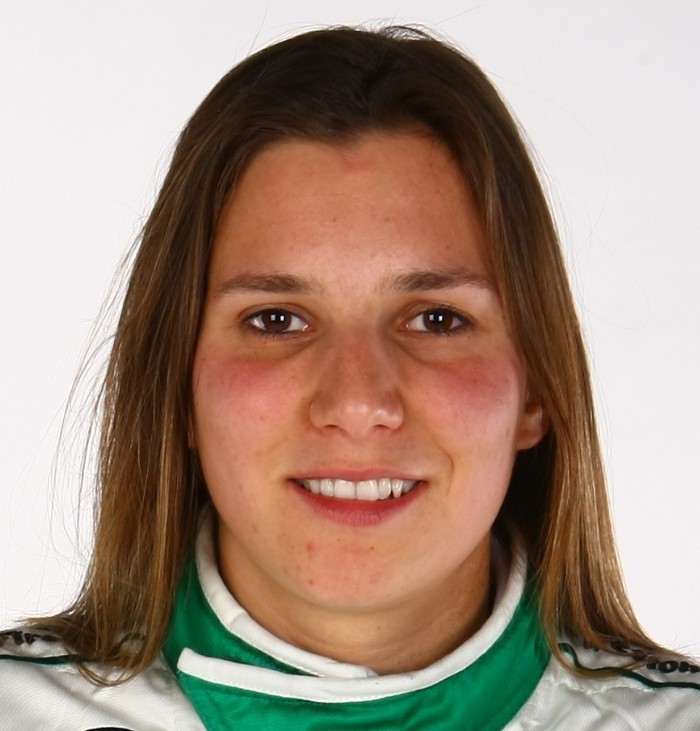Q and A with Simona De Silvestro
 |
| Simona De Silvestro |
She was a young regional fencer and tennis champion. However, winning her first-ever go-kart race was all Swiss-born Simona De Silvestro needed to fuel her passion for a career in motor sports.
Just three weeks shy of her 23rd birthday, De Silvestro was set to run in Aug. 14 Izod IndyCar 225 race at New Hampshire Motor Speedway. De Silvestro was the Indianapolis 500 Rookie of the Year in 2010, but could only complete 44 laps this year after brushing the wall led to a series of failed pit attempts to fix the car, ending in a premature exit.
Q. You started the Indy race from the 24th position, ahead of many others in the field.
A. We were pretty happy with where we were. We wish it had been a little more up front, but it was a good starting position for the Indy 500, and you can be pretty much anywhere you want as long as you make the show and that's something really cool.
Q. You were involved in a pretty scary accident while qualifying for the Indianapolis 500, suffering burns on both hands after a fiery crash.
A. Everybody at Methodist Hospital took really good care of me. It was a really frightening accident, especially being in the fire.
Q. Following the accident, you made the comment that you needed to climb back in a car and push your fear aside and drive again right away.
A. Yes. Friday after the crash I wasn't sure if I wanted to be a race car driver anymore. I thought, "Maybe I should give it a shot and try it out and see how it feels," and it felt all right. I'm definitely still a little bit scared, but I think I'm just going to have to work it out and I'm glad I came to this decision.
Q. More and more women are becoming involved in Indy racing.
A. Definitely, it's great. I think there were four that qualified (for this year's Indy 500). For me, you don't really pay attention to that as you're trying to beat all the other race cars out there so it's nice to be four women, but it's not my focus to be the best woman out there but the best race car driver.
Q. What got you interested in racing?
A. I always liked speed, and my dad bought me a go kart when I was 6. I really enjoyed it. I was playing a lot of different sports, but racing was always my favorite. I was lucky that my parents supported me when I was younger, and here I am today with a great sponsor Nuclear Clean Air Energy supporting me and trying to achieve my dreams.
Q. You grew up in Switzerland. Is there much flat ground there to practice your driving?
A. It's funny, you know — in Switzerland, racing is banned, so we had to go to France and Italy to go racing. There was a lot of traveling.
Q. Didn't you have the lead for part of the first Indy race in which you drove?
A. It was last year in Brazil, my first-ever IndyCar race and I got into the lead and it was a really special moment for me because it doesn't really happen that often. Last year was a great season and even this year started off real well and I'm really happy about that.
Q. You just signed a three-year deal with a sponsor. Talk a little about the business side of racing.
A. Racing has changed quite a bit, and we're doing a lot of business to get sponsorships. I'm lucky to be with Entergy because they're really supportive of me and supported me in the past. We're really lucky that they chose me to be a spokesperson for Nuclear Clean Air Energy. They're a great partnership. We've been very busy with them promoting the safety of nuclear energy and things like that. I'm really proud to be with them.
Q. Tell us about the physical conditioning needed for an Indy race.
A. Driving an Indy car is really tough. Our heart rates are about 150 beats per minute, so it's like doing a fast run for three-and-a-half hours. It is really tough, and it gets really warm in the race car and so many things (are) happening as we're going over 200 miles per hour for a long time — these are things you really have to prepare for.
I have a great training program, physically. A lot of cardio and weights to drive the Indy cars so I'm going to be prepared pretty well.
Q. Since there is so little room in the car, is it helpful to be smaller and in good shape?
A. Yes, the smaller you are the better it is. If you're pretty small it helps on the oval if you're in a crash you won't hit your head like other people. nhbr.com
